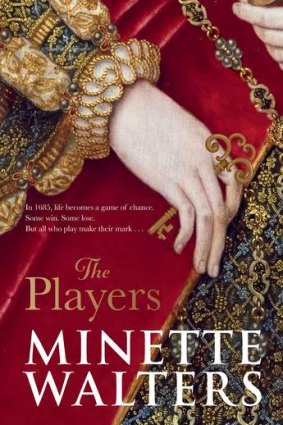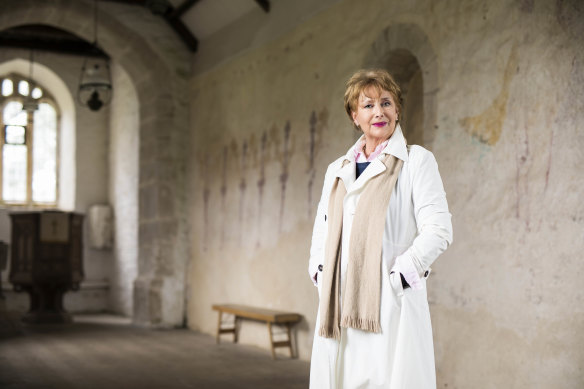

It was a long and painful road before joint monarchs William III and Mary took charge in 1688 and agreed to reduce royal powers. The Civil War lasted nine years and took more lives than World War I, in terms of a percentage of the population. Charles I was beheaded, and Oliver Cromwell imposed his own decade of despotic rule as Lord Protector. After a calmer interlude under Charles II, James II inherited the throne. A fanatic Catholic, he was determined to put down Protestant enemies and sentence thousands of Monmouth’s rebels to the horrible punishment of hanging, drawing and quartering.
One of the most colourful characters in The Players is a real person: George Jeffreys, known as the Hanging Judge, who ferociously prosecuted the rebels in trials dubbed the Bloody Assizes.
“I live near Dorchester, and they still have the Hanging Judge’s Tea Rooms,” Walters says. “He’s still a figure of great hatred in the South-West [of England]. Nobody has ever forgotten what he did.” She portrays him as monstrously brusque and rude, callous about his victims, impatient to get through the huge list of defendants by giving them false assurances of leniency if they plead guilty.
But Walters is also sympathetic to Jeffreys. “I was interested in giving him a slightly softer side. He was an incredibly sick man, constantly in pain, he died at 43 – effectively, his kidneys failed him. And he self-medicated. He retained the ability to be drunk as a skunk but still be an extraordinary lawyer. Everybody recognises what a clever and ambitious man he was but by obeying James, he made himself completely and utterly hated.”
Jane Harrier manages to influence Jeffreys because she is the only doctor who can treat his pain. Although female physicians were illegal in those times, Walters has drawn from the lives of three successful women doctors who had support from the top of society for their practice. “I always have strong, independently minded women in my novels,” she says. “I get asked a lot, did women like that exist? Yes, of course, they did. Look at any of the queens. If women had been writers, they would have written about women. But it was men who wrote the histories, and men with big egos and lots of money captured the headlines.”

Minette Walters in Dorset, where she and her husband live in a historic manor house.Credit: Fabio De Paola
She’s glad that young women today want to have careers. “When I was growing up, my mother said, ‘you’ve got to marry well’. I thought, ‘like hell’. I have a lovely husband, but I didn’t marry him so he could look after me.”
In an earlier career, Walters was an editor of hospital romances. “I could only have stories about doctors and nurses and I needed eight titles a month. I can’t tell you the amount of dreadful stuff I got. People’s idea was you stuck a doctor and nurse together and they fall in love. Then they talk about the wedding. So I wrote a story myself to demonstrate that you need a plot.”
She submitted it to her boss at the publishing house without telling him she’d written it, and he said it was twice as good as anything else she’d published. “So he let me write 38 novelettes of 30,000 words each. It was amazing practice. I was writing and editing other people’s stuff and I trained as a subeditor, so when I wrote my first crime novel, I’d got the skills, and they have stood me in good stead ever since.”
Loading
Not that it was easy to find a publisher for that first crime novel, The Ice House. She’d given up on it when it was finally taken up by Maria Rejt at Macmillan, who had been an assistant to a publisher who had turned it down. When Rejt became an editor, she asked if it was still for sale. Published in 1992, it took off worldwide, selling to almost 40 countries.
Walters continues to write historical stories with a strong local connection: her home county of Dorset was at the centre of both the Civil War conflict and the Monmouth rebellion. If you drive through the rolling hills and valleys, it hasn’t changed much, she says, and there’s a great research source in the Dorset History Centre. She’s now working on a book that combines crime and history. “It’s about smugglers in the 18th century, and I’m having a rollicking good time. Riding officers used to patrol the coast and so many of them were killed,” she explains.
“It was organised crime, like the Mafia. But nobody hated them because everything was much cheaper when you bought it from a smuggler.”
The Players by Minette Walters (Allen & Unwin), is out now.









 Add Category
Add Category